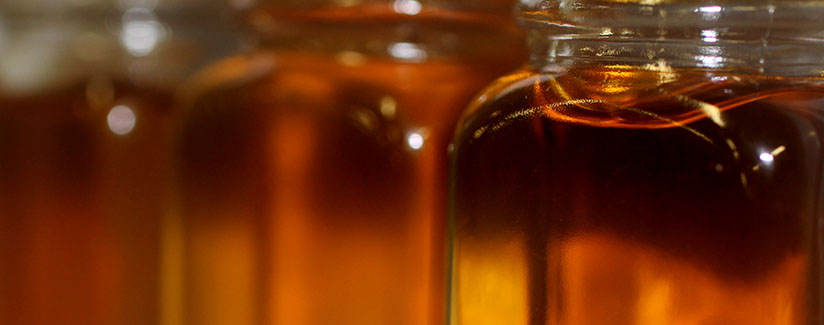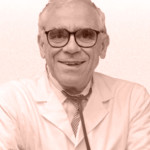
“High fructose corn syrup is a major cause of obesity in the United States.”
The Skinny
An abundance of confusion has complicated the use of high fructose corn syrup (HFCS) since it was introduced as an industrial sweetener – a substitute for sugar – in the 1960s. Some of the controversy derives from the dramatic increase in the prevalence of obesity in the U.S. (and in the rest of the world). The simultaneous occurrence of these two events is striking and it is tempting to relate one to the other.
Despite its name, HFCS is the equivalent of table sugar, nutritionally, chemically and functionally. It does not have significantly high fructose content if you compare it to sucrose, which is what it replaces in so many of the foods we eat. There are no differences in comparing sugar and HFCS in their impact on appetite or on levels of blood sugar, insulin or on a variety of metabolic measurements or hunger signaling hormones.
The realization that obesity is increasing with equivalent rapidity in many parts of the world in which HFCS is not commercially available further undermines the argument that HFCS is a cause of obesity.
HFCS lowers the cost of sweetening foods and producing certain kinds of foods and beverages. With lower costs we have increased consumption. HFCS is not the culprit, no more than sugar, but it is an innocent participant in the complex process of manufacturing and selling food.
There is no dispute that weight management mandates decreasing the consumption of high calorie foods. Nevertheless, there is no metabolic, nutritional or chemical reason to assign unique responsibility to HFCS. For weight management, it’s every bit as bad as sugar, but not worse.
We reached out to Dr. Arthur Frank, Medical Director of the George Washington University Weight Management Program Washington, DC for his thoughts.

Arthur Frank, MD says:
There is no metabolic, nutritional or chemical reason to assign unique responsibility to HFCS.
An abundance of confusion has complicated the use of high fructose corn syrup (HFCS) since it was introduced as an industrial sweetener – a substitute for sugar – in the 1960s.
Some of the controversy derives from the dramatic increase in the prevalence of obesity in the US (and in the rest of the world). The numbers of obese people started rapidly increasing at about the same time that HFCS became available as a substitute for sugar in the production of hundreds of sweetened food products; most notably in soft drinks. The simultaneous occurrence of these two events is striking and it is tempting to relate the one to the other. (1)
Some of the controversy also derives from the selection of its name, high fructose corn syrup, by the chemists who created it. They were tinkering with the process of creating sugar from corn. Table sugar, sucrose, is a chemical compound containing equal parts of two smaller sugar molecules, glucose and fructose. Until 1968 the sugar derived by deconstructing the complex corn starch molecule yielded glucose alone. Mechanisms were developed then to convert some of that glucose to fructose. Eventually, the chemists were able to increase the production of fructose so that the mixture contained equal amounts of glucose and fructose, comparable to table sugar. Pleased with their achievement of increasing the fructose content of corn syrup, the new product was given the unfortunate and misleading name “high fructose corn syrup.” Quite reasonably, HFCS is thought to contain high amounts of fructose, with all of the assumed consequences which derive from high amounts of fructose. Higher, yes, than corn syrup alone, but not higher in fructose than ordinary table sugar. HFCS is the equivalent of table sugar, nutritionally, chemically and functionally. It does not have significantly high fructose content if you compare it to sucrose which is what it replaces in so many of the foods we eat
Most of the commercial HFCS now being used in the US contains either 42% or 55% fructose. (Table sugar is 50% fructose.) These different products have slightly different properties in commercial food production but their endocrine, metabolic and nutritional effects are similar. There are no differences in comparing sugar and HFCS in their impact on appetite or on levels of blood sugar, insulin or on a variety of metabolic measurements or hunger signaling hormones. (2,3)
If you consume an ordinary sugar-sweetened beverage your intestinal tract rapidly splits the sucrose molecule into its two component molecules, glucose and fructose; equal amounts of each. The process is simple, quick and complete. The body then processes the glucose and fructose in exactly the same manner as it processes the two components of HFCS. Actually, in a mildly acidic soft drink the chemical breakdown of sucrose to glucose and fructose starts spontaneously in the bottle (or can) on the shelf and may even be substantially complete before it is consumed depending on the acidity of the drink, the temperature and the time on the shelf.
The realization that obesity is increasing with equivalent rapidity in many parts of the world in which HFCS is not commercially available further undermines the argument that HFCS is a cause of obesity. (4) If HFCS were a factor which contributes to obesity, one could not establish that it is a necessary condition for the weight gain of populations not exposed to HFCS.
Although the population statistics establish that the dramatic increase in the prevalence of obesity coincided with the substitution of HFCS for sucrose, the logical conclusion is that, since there is no difference in the two sweeteners, there is no reason to blame HFCS for obesity. HFCS seems, then, to be functionally identical to table sugar and it should be easy to say that HFCS is not any greater a culprit than sucrose; and to conclude that obesity is not caused by HFCS. Isn’t the temporal association just a mere coincidence?
As with all controversies in science, it really is not that simple. It gets complicated for three linked reasons.
First, HFCS lowers the cost of sweetening foods and producing certain kinds of foods and beverages. With lower costs we have increased consumption. This is particularly true for HFCS sweetened beverages. If the cost of it is kept low more of it gets used, or, at the least, cost is less of an obstacle in purchasing decisions. HFCS is not the culprit, no more than sugar, but it is an innocent participant in the complex process of manufacturing and selling food. To assume, however, that the availability of an inexpensive sweetener causes obesity would be comparable to assuming that the availability of cheap weapons is why we have wars.
Second, the human brain controls calorie intake in response to calories consumed. Although we assume that eating is merely a matter of choice, eating is actually largely regulated by an array of complex brain signals. The brain measures food (calorie) intake and then transmits start and stop eating signals. But, for reasons poorly understood, the brain fails to recognize liquid food calories as well as it recognizes solid foods calories. (5) Liquids are more of a menace for calorie control than solids. If HFCS (or sugar) is put into a beverage it will contribute more to your total daily calorie consumption than the same amount of HFCS or sugar consumed as jelly beans or pastry. The body’s regulatory system gets clearer feedback signals from calories consumed as food than it does from calories consumed as liquid. The amount of HFCS or sugar consumed in soft drinks contributes disproportionately to our community’s consumptions of calories.
Finally, fructose seems to be a particular culprit in weight gain, but again, it’s an equal opportunity culprit, and the brain doesn’t seem to care if the fructose comes from sugar or HFCS. Fructose does not signal the body’s control mechanism as effectively as does glucose. If we consume more sweetened foods, particularly more sweetened drinks, we are going to get more calories, more sugar or HFCS, and we will get more total fructose. The name, high fructose corn syrup, is misleading, suggesting that it contains a disproportionately high amount of fructose. It does not, compared to table sugar. But, an increased total consumption of beverages means more of everything and a pattern which predicts more weight gain.
There is no dispute that weight management mandates decreasing the consumption of high calorie foods, particularly sweetened foods, and more so with beverages sweetened with sugar or HFCS. Nevertheless, there is no metabolic, nutritional or chemical reason to assign unique responsibility to HFCS. For weight management, it’s every bit as bad as sugar, but not worse.
1. Bray GA, Nielsen SJ, Popkin BM. Consumption of high-fructose corn syrup in beverages may play a role in the epidemic of obesity. Am J Clin Nut. 2004; 79: 537-43.
2. Melanson KJ, Zukley L, Lowndes J, Nguyen V, Angelopoulos TJ, Rippe JM. Effects of high-fructose corn syrup and sucrose consumption on circulating glucose, insulin, leptin, and ghrelin and on appetite in normal-weight women. Nutrition. 2007; 23: 103-12.
3. Stanhope KL, Griffen SC, Blair BR, Swarbrick MM, Keim NL, Havel PJ. Twenty-four hour endocrine and metabolic profiles following consumption of high-fructose corn syrup-, sucrose-, fructose-, and glucose-sweetened beverages with meals. Am J Clin Nut. 2008; 87: 1194-203.
4. Forshee RA, Storye ML, Allison DB, Glinsmann WH, Hein GL, Lineback DR, Miller SA, Nicklas TA, Weaver GA, White JA. A critical examination of the evidence relating high fructose corn syrup and weight gain. Crit Rev Food Sci Nut. 2007; 47: 561-82.
5. DiMeglio DP, Mattes RD. Liquid versus solid carbohydrate: effects on food intake and body weight. Int J Obes Relat Metab Disord. 2000; 24: 794-800.
“US Grades of Maple Syrup” by LadyDragonflyCC ->;< is licensed under CC BY.


























